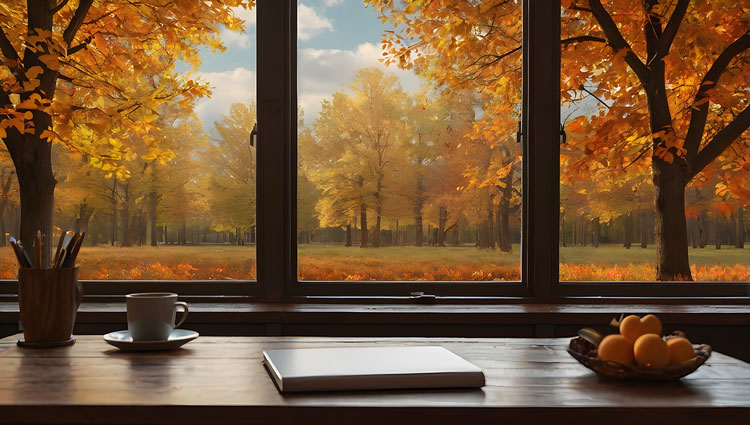What do mission-driven organizations get when they add fun and humor to their marketing mix?
A surprising way to inspire action.
With 1.8 million registered nonprofits in the United States vying for attention to increase awareness, change behavior or encourage action, taking a playful approach to fulfilling your mission can work.
Embracing what may initially seem like unconventional strategies has been in nonprofits’ DNA for decades. Nonprofits changed the marketing landscape by utilizing strategies from the private and public sectors to increase donations, cultivate volunteers, influence policy, educate the public, or encourage use of their programs and services. And they have continued to evolve by employing other approaches including social marketing, emotional marketing, and eco marketing. More recently, causes are appreciating that lighter tactics—when executed deftly—can make tough topics easier to digest and have impact.
What’s Behind This “Spoon-Full-of-Sugar” Approach?
People who are only given more information are unlikely to change their beliefs or behaviors. This points to the need for organizations and activists to drive change by moving beyond just raising awareness.
That includes the typical practice of using messages that aim to guilt people into action; providing reams of statistics; employing scare tactics; and sharing authoritative testimonials—all of which run the risk of making audiences feel overwhelmed, uninterested, tired, or shut down.
On the other hand, turning to “fun” pulls people in and creates a “positive emotional connection which can, in turn, inspires engagement and action.” Humor in marketing is guaranteed to capture attention. In short, fun matters! At ALX Dog Walk, we call this phenomenon FunActivism.
Ample research exists about the effectiveness of humor and fun in helping us to “process, relate to and retain information” in addition to feeling good, optimistic and more committed to making a difference. And it can make a big difference for your organization.
Unpacking FunActivisim
FunActivism utilizes fun as a:
-
- Catalyst for Change. FunActivism is a creative approach to social activism that puts fun front and center—emphasizing enjoyment, playfulness, and community engagement.
-
- Pathway to Take in Serious Information. FunActivism seeks to draw people in by making activism accessible, including the appropriate balance of humor and lighthearted activities even if the product, service or cause is serious.
-
- Means to Energize and Attract New Supporters. FunActivism offers a way to break down barriers to participation, encouraging individuals to get involved without having to feel overwhelmed by the weightiness of an issue.
-
- Answer to People’s Need for Optimism. FunActivism aims to foster a sense of belonging and motivate people to engage in meaningful conversations and actions in a way that feels positive and uplifting.
Unique Pairings
There’s nothing like the unexpected to work as an attention grabber! Here are examples that show surprising and successful uses of fun and humor in marketing to bring increased awareness and advocacy to important issues:
-
- The Centers for Disease Control and Prevention initiated a zombie-themed campaigned called Preparedness 101: Zombie Apocalypse to raise awareness of emergency preparedness. Starting with a blog, the post made the case that if you can protect yourself from the living dead, you can also survive natural disasters like hurricanes and possible pandemics. This humorous approach worked. More than 30,000 people raced to read the blog, making it trend on social media worldwide with coverage by CNN and the Wall Street Journal.
-
- A strategic collaboration between civil rights activist Amanda Nguyen, her nonprofit Rise, and the comedy website Funny or Die succeeded in changing the law about victims’ rights. Funny or Die released a YouTube comedy sketch video titled “Even Supervillains Think Our Sexual Assault Laws Are Insane” to promote a new bill in the Senate known as The Sexual Assault Survivors’ Rights Act. The goal of the video was to shed light on the backwards laws that dictate states’ treatment of assault survivors. Bottom of Form And the collaboration worked: Within four days, the petition tied to the video received more than 100,000 signatures, and the video itself received millions of views. The U.S. Congress passed the legislation in 2016. Sexual assault is far from funny, but as Nguyen said, “what is funny and what we make fun of is the status quo.”
-
- Our final example is the ALX Dog Walk, a nonprofit in Alexandria, Virginia that is near and dear to our hearts as the organization’s founder and board member. The Dog Walk intentionally combines two seemingly disparate elements: the love of dogs and the importance of living plastic-free and more sustainably. This odd merger grew out of the fact that Alexandria is a city of 160,000 humans and 80,000 pets. It boasts 18 dog parks and eight exercise areas and attracts many visitors thanks to its location along the Potomac River.
Sadly, like many riverside cities, there is a significant problem with plastic usage and pollution—an environmental issue plagued with information overload and often devoid of enjoyment. But the pairing of pooches and plastic reduction ended up being quirky and fun enough to work!
Since its founding three years ago, the ALX Dog Walk has seen 1,000 humans and 700 dogs participate in a 2-mile walk and enjoy finish-line festivities, food, music, contests, prizes and booths that share tips, tricks, and products that contribute to plastic-free living.
Whether participants attend purely to spoil their dog, engage with community, feel good about funding education and awareness initiatives, or learn at least one new thing about plastic reduction, the organization has put FunActivism front and center and is making an impact city-wide and beyond.
Walking the Talk
Our experience with the ALX Dog Walk has taught us several things about infusing fun in our mission, event, marketing strategies, and messaging. Here are our Top Ten Takeaways:
-
- Respecting the cause and having fun are not mutually exclusive. Even serious issues can withstand lighthearted elements.
-
- The unexpected can bring fresh attention. A head-scratcher combination of serious and fun can provide intrigue that makes people stop, look, and listen. Humor in marketing is an attention-grabber.
-
- Tap into what makes your audience feel a positive connection. Guilting people into action may work a time or two, but authentic fun can motivate participants to come back for more.
-
- Messaging matters. Finding the balance between fun language and sobering communication is critical.
-
- It’s not all about you. Create good will in your community by shining the light on other organizations that are connected to the cause and doing great work. Equally important is for audiences to hear other knowledgeable, credible groups that are invested in the issue.
-
- Establish a go-for-it environment. Let fun, not fear of making mistakes, rule the day. Experiment (thoughtfully) with new upbeat ideas. Train, then trust your volunteers to fly the fun flag. Encourage participants to provide feedback and show your appreciation for constructive input. Find unique and fun ways to acknowledge your sponsors.
-
- Have something fun for everyone! Create an intentional and manageable range of enjoyable approaches to entice a cross section of community support (e.g., residents, businesses, government agencies, media and other nonprofits). Their collective participation and enjoyment reflect their endorsement and validation of your efforts.
-
- Enjoy first; become educated later. There’s nothing wrong with people being drawn to your event because they like the food, the emcee, the outdoors, or the comradery. Future activism can follow.
-
- Encourage small change. Any positive change is better than no change.
-
- If the only thing some participants remember about your event is having fun, that could be the start of a beautiful relationship.
One Size Doesn’t Fit All
It’s important to remember that because people absorb and act on information differently, different voices—from lighthearted to serious—are necessary to effect change. FunActivism is just one way for nonprofits to bring new energy to their mission while making championing their cause, well, more fun!
Julie Chapman is the founder and chair of The ALX Dog Walk, a 501(c)(3) nonprofit that organizes an annual dog walk to build community, have fun, and educate citizens across the District/Virginia/Maryland area about plastic-free and sustainable living.
Lisa Novick is a communications executive specializing in philanthropic initiatives in the nonprofit, private and public sectors. She serves as Strategic Advisor at Dog Tag Inc., a nonprofit that helps veterans, spouses, and caregivers transition from military to civilian careers. She is a board member of The ALX Dog Walk.









This is so true and it has happenned to me: “… the typical practice of using messages that aim to guilt people into action; providing reams of statistics; employing scare tactics; and sharing authoritative testimonials—all of which run the risk of making audiences feel overwhelmed, uninterested, tired, or shut down.”
Great advice in this article. Many people are already feeling overwhelmed; trying to scare them into making a gift is not going to make them want to become a partner in your mission. But show them they can have fun and help at the same time? Gold.
Article hit the nail on the head, whatever the cause, engaging folks by tapping into their sense of humor, curiosity and innate drive to enact positive change works.
Not overwhelming people with numerous lifestyle changes all at once doesn’t work. Rather baby steps that develop new habits overtime create positive often long lasting outcomes. When one experiences joy in their efforts to work for a worthwhile goal the reward is two fold,both participant and cause experience success!
Couldn’t agree more with the authors. As a seasoned (AKA old) sales and marketing pro, if I’ve learned anything in my careeer it’s that the (yup – you guessed it) *old* adage is true: “People may not always remember what you said, but they will always remember how you made them feel.” Having fun is a basic tenet for feeling good. Connecting good feelings to a mission, campaign, or message is a WIN in my book.
This article is so well written and took the words out of my brain. I totally agree that philanthropy needs to be FUN. Personally, I don’t get much from seminars, long articles, or other “hands off” approaches. Being able to share this experience with my dog makes it even more enjoyable! I can’t wait for the next ALX Dog Walk and seeing what incredible vendors will be there this year.
Jess – Thank You. It IS a great article. ~ Viken